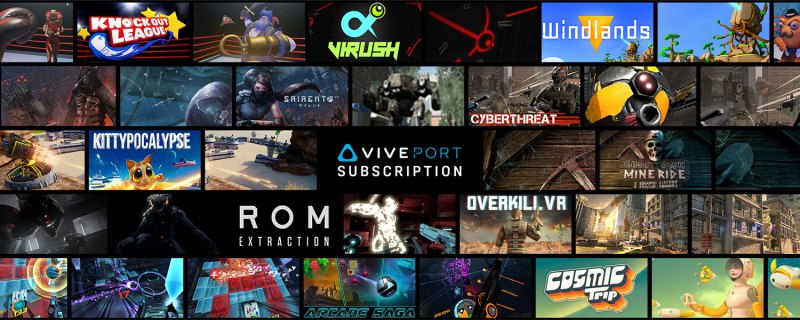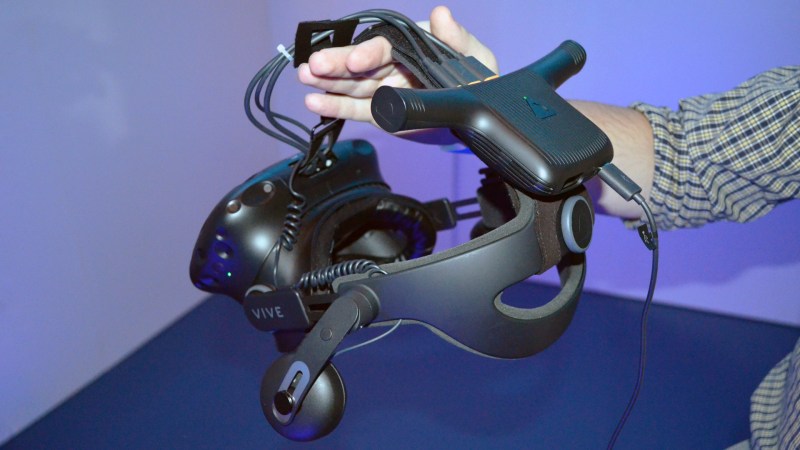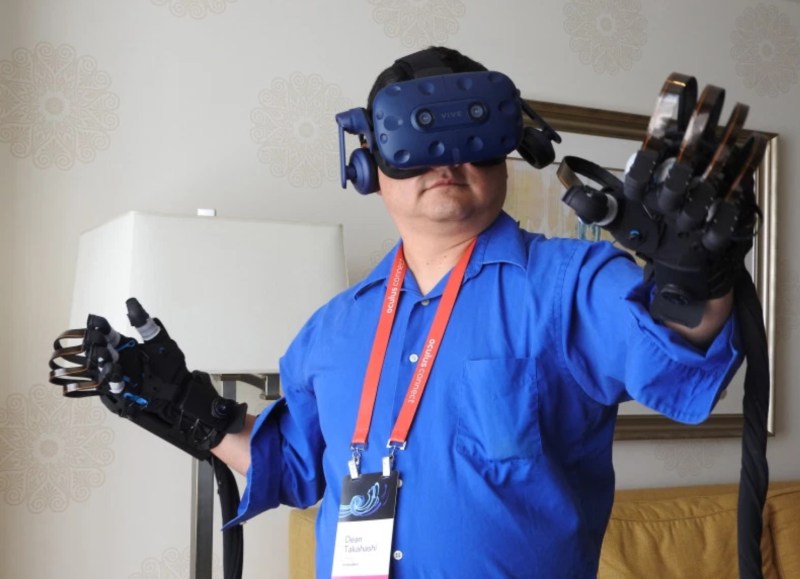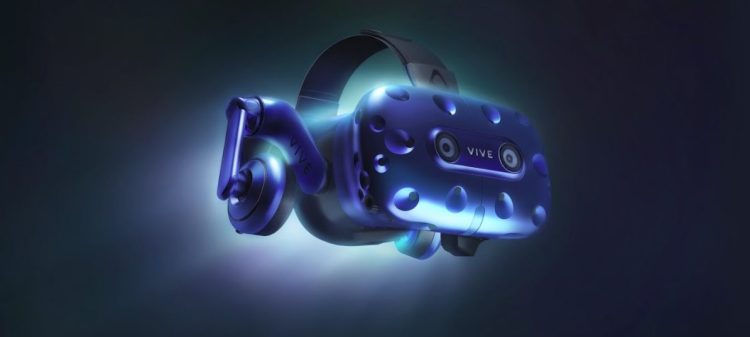
Above: HTC Viveport
GamesBeat: This is for the wireless solution?
Steiber: Yes, for the Wave partners. So either Vive Focus or Pico or some of the other ones using the Wave platform. We announced today that we’re coming out with a developer kit that works for the Focus. It’s an ultrasonic IMU solution. You have two 6DOF controllers. It’s a little thing you put on your Focus today that enables the ultrasonic part of it. You can apply now. We don’t have a ton of availability, so we’re trying to set reasonable expectations. But as we approach the end of this year and the beginning of next year we’ll start reaching out to developers.
The other thing we announced was—we do believe there are many different solutions to do 6DOF. Ultrasonic could be one, but you could also have visual with cameras. You could have magnetic. You could have IMU using a gyro and accelerometers. We think there will be an ecosystem of different 6DOF controllers. We announced one partnership with Finch. They’ve made a controller for the Focus that’s 3DOF, and they have a 6DOF controller that’s not optical or ultrasonic. It’s an IMU with a kinetic model. It knows where you are. There’s no interruption from breaking line of sight or disruptive audio. You can pre-order now and you’ll get it in January.
If you’re an enterprise doing a training application, maybe you need a certain thing. If you’re doing a game like Beat Saber, you need something else. There will be various solutions for different roles. Enterprise is going to be an important segment for all-in-one. If you’re doing design or collaboration or staff training or selling cars in VR or something, you’ll have different needs, and different solutions will make sense. We’re getting those dev kits out now so that you’ll be able to have more solutions as we move into the next year with the new headsets coming. We the ecosystem developing to a point where there are six-six solutions that are all-in-one.
GamesBeat: That matches what Oculus plans to do with the Quest next spring.
Steiber: Right. There will be a portfolio of all-in-one devices that have 6DoF capabilities. In some training situations maybe you won’t need it, but in others you definitely do. We want to make sure we give that to the market already.

Above: HTC’s Vive Wireless Adapter mounted on the original Vive.
GamesBeat: Do you have a sense yet for where you want your target platform to be? Are the majority of developers targeting one thing? Or are you expecting a variety of developers targeting a variety of devices?
Steiber: It’s almost like a pyramid. You’ll always have this top of the pyramid, high-end PC VR, and then you’ll have middle segments, the early mass market at some point. I’m not too convinced about the low-end mobile market at all. But I do think—our bet is that for the standalones, there will be many different devices coming out. We want to provide all of those headset manufacturers with one platform, and also help developers so that they can publish on one platform and work with multiple headsets. It will be very hard for them to do something that works for each headset with different SDKs and different controllers and so on. That’s what the play with Wave is.
Ideally, if some of the other established platforms—if you create an app for that platform, it should be easy to also compile it for our platform. There shouldn’t be that much incremental extra work. I do think that having the subscription service that we’re going for—we can also help developers to publish on multiple devices and multiple platforms, similar to how Netflix and Spotify are on different hardware. The store is essentially a service. Clearly we can’t be the store on some of the leading platforms, but like we did with Oculus–we launched the subscription service for Oculus titles. We launched the subscription service for Steam users. It’s a way to reach that audience with a differentiated offering.
Having a platform, having some key services—we’re investing in things like VR chat as a social platform, which I think could also reach across applications. In each of these things we want to have the most immersive experience at the high end. We’ll have our own devices like Focus, and potentially new ones. The same goes for PC VR. There will be a couple of platforms. PC is a bit easier because it’s more open by default. We’ll play there, but hopefully we’ll have a platform and services that run across the other hardware and operating systems. That’s our plan.
Some of the things we’ve announced with XRA, and also with Virtual Link—we need to come together as an industry, so that it becomes easier for developers to developer and reach all these different platforms. I don’t think there will be huge fragmentation, but they have to pick their battles a bit. We can help them, help ourselves, help consumers and enterprises. That’s what we need to get this ecosystem going. If it becomes too silo’d, I think everyone loses. The industry will lose momentum.
GamesBeat: Do you foresee having the equivalent of a Quest, or do you think you already have it?
Steiber: I can’t comment on new product launches, but this year we launched the Focus and Vive Pro. I do think that with these dev kits coming out, we’ll see all-in-one on the Wave platform. There will be new things coming out next year. The same goes for PC VR. Every year is going to get better and better.

Above: Dean Takahashi tries out the Haptx gloves with the HTC Vive VR headset.
GamesBeat: It almost seems like the development cycle here—you work on this new technology, put in a cutoff date, and whatever you’ve done at that point goes into the next version. Then there’s more to come later. There are always some trade-offs.
Steiber: There clearly are. I do think that unless you’re making a material improvement, it’s not a new version. It’s just an update. We are very careful about thinking about how we can make sure we have the most immersive experience in each of these different segments. It’s also interesting that we’re seeing enterprise really growing. There’s clear value. Enterprise has very different needs, of course, than the consumer market.
GamesBeat: This show is a little smaller than I’ve seen before, but it does seem like there’s a wider set of applications in more categories this year.
Steiber: Yeah. Also, with GDC, VRDC, XRDC—we’re starting to see this mix of people. They’re also chasing AR a bit. The use cases and the timetables are a little different. Some people are saying it’s easier because you can use it on your mobile phone, but the question is, is it really augmenting your reality? Is it changing your perception? Probably not. It’s an assistant kind of experience. But I do think those experiences where you use some sort of see-through technology are pretty close. It’s early days.

